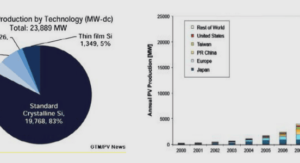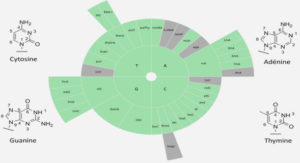Trois essais en économie du changement structurel
Stylized facts
Our empirical work is based on Food and Agriculture Organization (FAO) statistics on agricultural production, inputs, and population distribution. However, employment data lacks consistency and coverage, so we use employment data from the International Agricultural Productivity database of the Economic Research Service. Demographic data, namely crude birth and death rates, can be found in World Population Prospect (2017). We also needed information on the number of farms, which can be found in separate agricultural censuses (FAO-Statistics). No official data set contains this information. Building on previous efforts by researchers [Vollrath, 2007, Lowder et al., 2016] and individual censuses, we compiled a new database that contains this information. The summary statistics of the key variables by region are given in table 3.1 of the Appendix. In this section, we will discuss the demographic evolution in relation to supply and demand conditions for agricultural products in different regions of the world. Since we are comparing continents with large numbers of heterogeneous countries our comparison is built as much as we can on distributions rather than a single summary variable. When we refer to regional values for ease of expression, we mean median values. NB : The limiting variable is the number of farms. It is extracted from agricultural censuses that are conducted each decade for some countries. We use this variable to calculate the average farm and urban market sizes. Hence both variables are calculated for the years where agricultural censuses were conducted in the corresponding countries. Henceforth, when we refer to the last values of these variables, we mean the values calculated for the last agricultural censuses. Similarly, when we refer to the annual rate of growth of these variables, we mean the annual compound rate of growth between the most distant censuses. 7. It was found (1) that differences in the inputs of modern man-made factors account more for the difference in productivity than differences in the endowments of original factors and (2) that education and research are crucial in determining the productivity gaps…and in another work : internal resource accumulation accounts for approximately one- third and technical inputs roughly one- fourth of the differences. Human capital accounts for more than one-third of the difference between the United States and India, the United Arab Republic, and Colombia [Hayami and Ruttan, 1970a].
Demography, land, and farm size
The evolution of Agricultural land. The following map shows the annual growth rate of agricultural land over the period 1960-2015 for each country. Figure 1.5 – Agricultural Land Evolution Source : FAO. Calculations by the author. Agricultural land has increased in all regions except Europe and Northern America, where it has continuously decreased since the 1960s. 9 Consequently, the median country in Africa has more agricultural land than the median European country for the first time in the 2000s. An exceptional land expansion has been observed in Africa. In particular, in Niger, Tanzania, Cˆote d’Ivoire, Rwanda, Guinea, Benin, Togo, Comoros, Cameroon, Mali, Sudan, Burkina-Faso, Sierra-Leone, Malawi, Nigeria, Kenya, Ethiopia, Ghana, Angola, Chad, Guinea-Bissau. In these countries, agricultural land has more than doubled during the 1960-2015. 10 For median countries, the land has increased by 77% in Africa, 45% in the Americas, 32% in Asia, and decreased by one-fourth in Europe. 8. Agricultural land expressed in 1000 Ha. 9. Except in Switzerland, Slovenia, Luxembourg, Netherlands, Romania, France Greece, Albania, but only remarkable increase happened in Albania. 10. In America, countries, where agricultural land has doubled, are Paraguay, Brazil, Belize, Peru, Bolivia, Cuba, and Suriname. In Asia, these countries are Qatar, UAE, Kuwait, Laos, Viet Nam, Saudi Arabia, Nepal, Malaysia, Thailand, Indonesia, and Bangladesh. No country in Europe witnessed such growth in agricultural land. 27 The evolution of Agricultural holdings. The map in figure 1.11 shows the asymmetric development in the number of agricultural holdings, which is increasing in the global south and decreasing in the global north, which is in line with recent findings in the related literature [Lowder et al., 2016]. 11 Table 1.1 gives the quartiles of the distribution of annual growth rates of the agricultural holdings in each region. The most notable increases happened in the African and Asian continents. In Africa, 75% of the countries witnessed an annual growth of farms greater than 1.2%. Moreover, in 25% of them, the number of farms has grown by more than 3.5% annually. 12 Meanwhile, in the Table 1.1 – Quartiles of holdings’ number annual growth distribution Region 0.25 0.5 0.75 Africa 1.2 2.7 3.5 Americas -0.5 1.7 2.5 Asia 0.825 2 3.125 Europe -2.725 -1.85 -0.775 Note : *We computed the annual growth rate of the number of holdings in each country to get the continent’s distribution. Source : FAO- Agricultural Census. Calculations by the author. global north, almost all countries have seen the number of agricultural holdings decrease over the period. Rural Demography. The striking increase in the number of holdings in Africa relative to other regions is the consequence of the rapid growth of the rural population, as shown by the figure 1.10, and the slow pace of structural change. The increase in the rural population in Africa represents half of the total population increase, as shown in figure 1.2. The rural population is increasing in all the regions except in Europe. However, except for Africa, the rural population’s growth has slowed down since the 1980s. Figure 1.10 also shows that this continuous growth is the result of a sharp decrease in death rates 11. We use the terms ‘agricultual holding’, ‘holding’ and ‘farm’ to mean the same thing, that is agricultural holding. 12. At the sub-regional level, the most notable increases happened in SSA and Southern Asia. In SSA, 75% of the countries witnessed an annual growth of farms greater than 1.5%. Moreover, in 25% of them, the number of farms has grown by more than 3.77% annually. With 1.5% and 3.7% annual rates of growth, the number of farms will be multiplied by 2 and 6 respectively within 50 years. Only four countries have seen the number of farms decrease : Congo (1973-80), Sierra-Leone (1971-85), Seychelles(1960-2002), and Zambia(1960-2000). (Kenya was the country where the number of farms has grown the most in the world-given the average annual growth rate- leading to multiplication by ×6 of farms between the two censuses 60 80). See figure 1.11. 28 and relative stability of birth rates, which is characteristic of demographic transition. Implications on Farm size. Tendencies in both agricultural land and the number of holdings are reflected in changes in the average farm size. The following map illustrates the last recorded values of country-average farm size. It shows that 20% of the most land-constrained countries (in yellow) are exclusively situated in Asia and Africa, except Croatia and Montenegro. 13 Meanwhile, 20% of the countries with the largest farms are exclusively in America, Australia, and Europe (only three African countries, and three Asian ones). Figure 1.6 – Average Holding Size Source : FAO. Calculations by the author. Table 1.2 and figure 1.12 show that farm size is decreasing in most developing countries, namely in Africa, Asia, and Western Latin America. The latter has decreased in 85% of African countries. 14 It has also decreased in most Asian countries (in 60% of them). In these two regions, the rural population’s growth relative to total population has been the highest. This says that for both regions, the growth in farms has been more important than the growth of the land. These two regions can be told to have problems 13. And that 40% of the most land-constrained countries are concentrated in Africa and Asia with some countries in western Latin America (with some exceptions in Eastern Europe). 14. Except in Rwanda, Zambia, Libya, Sierra Leone, and Burkina Faso. It has decreased by more than 2% annually for 30% of these countries, and by more than 1% for 60% of them. 29 of land pressure coming from rural population’s growth, while in Europe, even with decreasing total agricultural land, the average farm is bigger now than before, and it has grown more than any region. In Europe, 83% of the countries have larger farms. For the Americas, the increase in both land and farms has resulted in an increase in farm size for 30% of the countries and a decrease for 70% of them. However, the decrease was not as sharp as in the African continent. Table 1.2 – Quartiles of average holding size annual growth distribution Region 0.25 0.5 0.75 Africa -2.35 -1.15 -0.7 Americas -1.8 -1.1 1.05 Asia -2.3 -0.7 0.5 Europe 0.6 2.4 3.05 Note : We computed the annual growth rate of the number of holdings in each country to get the continent’s distribution. Source : FAO- Agricultural Census. Calculations by the author.
Urban population and market size
The urban population has grown everywhere except in countries that have split or very small state islands. The African continent has experienced the most important growth. Our calculations show that two-thirds of the world’s most growing-the 10th decile- urban populations are in SSA. Table 1.3 shows that the urban population has been multiplied by at least 13 in 75% of African countries and by nearly 35 in 25% of most growing ones. 15 The only comparable subregion is Southern Asia (See figure 1.13). These tremendous numbers merely reflect the low initial levels of urbanization that prevailed in this region. Graphic 1.15 in the appendix on historical urbanization indicates that the region was lagging far behind the others and that urbanization is a colonial phenomenon : the colonial event was like a trigger point for the process of urbanization. Moreover, urbanization in Africa is not only a recent phenomenon but also a rapid one. To measure this speed, we calculate how much time it took for different regions to go from 12% to 40% urbanization rate : 250 years for western Europe, 100 years for Latin America, 60 years for Asia, and 50 years for SSA. This means that the latter urbanization waves are 15. For SSA it has been multiplied by at least 15 in 75% of countries, and by nearly 40 in 25% of most growing ones. Table 1.3 – Quartiles of urban population growth distribution (1950-2017) Region 0.25 0.5 0.75 Africa 12.8 21.9 35.4 Americas 1.6 3.6 8.1 Asia 4.7 10.4 22.4 Europe 0 0.5 1.6 Note : We computed the 1950-2017 growth rate of the urban population in each country to get the continent’s distribution. Source : WDI. Calculations by the author. more demanding in terms of urban planning (preparing the city to host newcomers). Finally, we would like to stress the fact that urban population growth is not only a by-product of rural-urban migration, or structural change. It is also, and to a large extent, the result of the urban population’s natural growth. Previous works estimated the latter’s contribution to 40% [Jedwab et al., 2014]. Ultimately, the urban market for farmers (defined as the ratio of urban population to the number of farms) has grown in 80% of African countries. 16 The same pattern is observed in Asia and American countries. As shown by the distributions of growth in this variable, the urban market has grown the most in Europe, then in Africa, Asia, and America (Table 1.4). The annual growth rate of the urban agricultural market has exceeded 3% in half of the European countries, 2.6% in half of the African countries and 2.4% in half of the Asian countries, and 1.5% in half of the American ones. Hence, despite the rapid growth of the urban population in Africa and Asia, the ratio of the urban population to the number of farms has not grown at the same pace. This expresses the tensions between rural population growth and urban population. In Europe, where urban growth has been negative since the 1980s, the market has grown more significantly than anywhere, which means that the reduction of farms has overcome the urban population decline. From the 1990s to now, using the last recorded values of the number of holdings, the median value of market size is 4.2 urban people/farm in Africa, 3.9/farm in Asia, 9.62/farm in the Americas, and 14.8/farm in Europe (Table 1.10). This is a huge difference in market size to which one has to add differences in individual income between these regions. Moreover, as one can see in the following map, the countries in the lowest quintile of market size distribution around the world [0, 3 urban people/farm] are 16. Present twice in the panel. Table 1.4 – Quartiles of urban market annual growth distribution Region 0.25 0.5 0.75 Africa 1.375 2.6 3.6 Americas 0.4 1.5 2.5 Asia 0.175 2.4 3.725 Europe 1.7 3.1 3.95 Note : We computed the annual growth rate of urban pop./farms ratio in each country to get the continent’s distribution. Source : FAO and WDI. Calculations by the author. concentrated in Africa (12 countries) and Asia (7 countries), with two exceptions from eastern Europe. Meanwhile, the higher quintile contains countries from Western Europe, America, West Asia, and Australia, but only one country from Africa. If we use an alternative measure of market size, that is, the population not engaged in agriculture, we will have globally the same patterns. Figure 1.7 – Average Urban market Source : FAO. Calculations by the author.
Demography and agricultural labor
In what follows, we will discuss the regional evolution of key inputs to agricultural production and their relative intensity. We start with agricultural labor to check how it is related to the rural population in different regions. We then discuss the intensity of the use of land and capital. 17 Figure 1.8 – Rural Population and Agricultural labor Force Note : Regional medians. Source : FAO. Calculations by the author. The rural population has followed very different dynamics between the regions. During the whole period (1960-2017), the rural population has been increasing in Africa in a phenomenal way (+146%- for the median country). Similarly, agricultural labor has grown at the same pace (+136%), so the ratio of agricultural labor to rural population has remained the same throughout the whole period. This reflects the fact that the rural population in Africa is mainly implicated in agriculture. We also see that at the individual countries’ level : the ratio oscillates around 40%. Also, this ratio is stable in Asia and the Americas. In Europe, however, both rural population and agricultural labor have decreased by 24% and 54%, respectively, leading to a decrease in the ratio of farm labor to the rural population in a dramatic way (50%). This can be explained 17. agricultural labor is defined as the number of economically active adults (male female) primarily employed in agriculture, 1000 persons 33 by the changing demographic structure in Europe with old people prevailing more than before, by the income diversification of rural workers, or by the mechanization of the sector. Hence, in the 2010s decade, only 12.8% of the rural population was engaged in agriculture in Europe compared to 40% in Africa and 27% in Asia.
Factor use in Agriculture
It seems that Africa has abandoned the ‘modernization’ of agriculture, in the sense of land-use intensification and labor-saving. 18 Figure 1.9 illustrates the land-use intensification. 19 The first panel represents the quantity of fertilizers, in kilograms, applied by hectare. We notice a convergence of Asia, Europe, and the Americas, while Africa is still lagging far behind. Also, all continents have reached a point where the rate of fertilizer use is stagnant. Likewise, the second panel shows no convergence in irrigation with the Asian continent at the lead. The third panel concerns the use of machinery by hectare. 20 We observe again a convergence of Asia and the Americas. Europe is leading, while Africa is always lagging far behind : 60 times less than Europe and 30 times less than Asia. Finally, the most important effort in the use of machinery, fertilizers, and irrigation was made in the Asian continent. Table 1.5 depicts trends in labor intensity in different regions. The first four rows trace the evolution of the land-to-workers ratio. This ratio is growing for Europe, decreasing for Africa and Asia, and stagnating for America ; so that, by the 2010s, the African farm worker is covering less than one hectare, while the European one covers more than ten hectares (in median terms). The following four rows trace trends of the machinery-tolabor ratio. First, we note that while America, Asia, and Africa have reached a point of stagnation of this ratio at different levels, the European continent is still replacing agricultural labor with machinery, so the capital-to-labor ratio in Europe by the 2010s been hundreds of times that of Africa (when comparing medians).
Introduction Générale |





